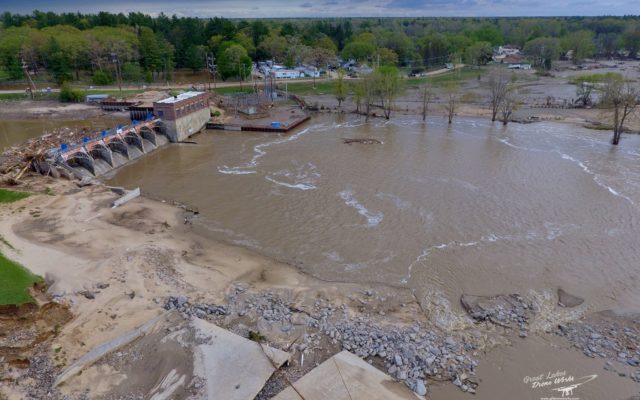New Report Details Physics Behind Edenville Dam Collapse

The Independent Forensic Team investigating the collapse of the Edenville Dam on May 19, 2020 has released an interim report detailing how the dam failed.
The five person team, authorized by the Federal Energy Regulatory Commission, found a rare but not unheard of phenomenon called static liquefication to be the likely contributing cause to the failure. Static liquefication occurs “when the mobilized shear strength in a saturated, loose sand decreases rapidly to values significantly less than the applied static shear stresses, resulting in a force imbalance that creates accelerations and velocities,” according to the IFT report.
What it essentially means is a sudden loss of soil strength under saturated conditions. Rain began to fall on May 17, continuing through to May 19. While the rainfall was not a significant amount, according to the report, it did cause water levels on Wixom Lake to rise 5.5 feet above normal pool levels and about three feet above it’s highest recorded level.
However, the IFT report says the while the water level contributed to instability, it did not overtop the dam embankments.
The failures of both the Edenville and Sanford dams resulted in a 500 year flood which caused more than $200 million in damages and the evacuation of about 10,000 people from Midland and Saginaw counties. Work is still being conducted to rebuild areas affected by the flooding.
State Representative Annette Glenn of Midland says in a news release the state needs more resources to for dam safety in the state. She says is committed to preventing future disasters like the Edenville and Sanford dam failures.
“That will take improvements in our dam safety program and more resources. We have accomplished a lot, and we are poised to accomplish much more. But there is still a lot of work to do.”
The IFT will release a final report of the dam failures but that may be months away.



